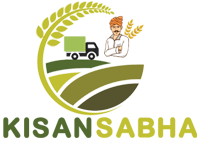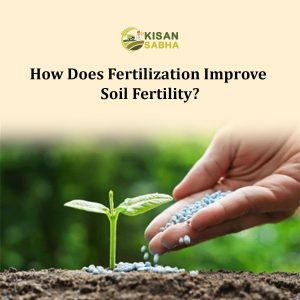Smart farming is a new concept in the farming sector to add value to the farming sector by incorporating various technologies to give high production rates in minimize environmental impacts. The elements of smart farming spread to almost all areas of farming, including crops and animals as well as resources. In this article, the various uses that help make smart farming an invaluable tool for modern farming are discussed.
7 Benefits of Smart Farming
Precision Agriculture:-
Among the applications of smart farming, precision farming is most widely discussed and used today. It refers to the integration of various technological means of location like Global Positioning System, and sensors, as well as the data analysis system to adjust the farming practices on the molecular level of individual clients.
Producers can track and assess aspects such as commodity status, soil type, climate, and pests and diseases in real-time. These all make a lot of sense and could be very much valued as a data-driven kind of provision; tailor-made irrigation, the precise type of fertilizer to be used, as well as the right time for pest control. In every way, effective utilization of resources, less wastage, and high efficiency make precision agriculture boost crop production.
IoT in Agriculture:-
The Internet of Things (IoT) as a way of connection and monitoring has emerged in the agricultural sector. There are viewable sensors in fields to capture information such as moisture, temperature, and nutrients in the soil. It is then relayed to a central system to assist farmers in decision-making based on the information being fed to the system. Further, IoT applications also exist in the context of tracking the health and behavior of livestock; fitted with sensors these are smart collars. Integrated systems support general farm operations and prevent or solve existing problems.
AI and Machine Learning:-
The use of artificial intelligence and machine learning is highly relevant in smart farming since the systems analyze large data sets to obtain valuable informative information. AgForecast helps to predict crop yields, disease, and pest spreads, and the best time to start planting. Nevertheless, AI algorithms can analyze agricultural data, and get at the roots of problems like pests and climate change. Through the use of Artificial Intelligence, farmers will be able to make sound decisions, allocate resources most efficiently, and achieve their goals safely.
Also Read:- The Revolutionary Potential of Healthy Soil
Automated Machinery:-
The application of smart farming encourages the use of smart machines and robotics technology in the performance of several farming practices. Another type of improved and automated mechanization is the GPS-monitored self-driven tractors which can follow a predetermined pattern thus minimizing fuel usage on fields. Cameras and sensors on drones provide farmers with a bird’s eye view of the crops, the disease status, and the conditions of the field. Automating some procedures increases productivity, decreases time, and allows farmers to think critically
Livestock Monitoring:-
Smart farming incorporates other aspects such as animal farming and welfare into its program. Smart devices with sensors record and transmit in real-time the important parameters, behavior, and location of cattle. Their owners get notifications about adverse symptoms requiring interference with the well-being of the animals. Besides the welfare of animals, this strategy also leads to healthier practices of animal farming. This in the long run will prove efficient in the use of resources
Weather Forecasting and Climate Monitoring:-
Smart farming pays particular attention to effective weather forecasting and climate control to avoid losses in farming. Through such predictions, farmers can organize themselves well to schedule when to plant, harvest, and even water crops. Through Climate monitoring, one can be able to modify the act of conducting farming. This will close the gap between farming and also improve farming practices in case there is any shift in the climatic conditions.
Supply Chain Optimization: From Farm to Table
Technologies used in smart farming enable the enhancement of the agricultural value chain. From the moment farmers harvest crops until they reach the end consumer, smart farming applications actively manage the supply chain and stock. This approach ensures efficiency and effectiveness throughout the entire process, enhancing the overall agricultural experience.
The use of technology like blockchain increases transparency and lets the consumer see how their food reaches the table. Supply chain management is closely tied to delivering high-quality, fresh horticultural goods while reducing waste and adverse environmental consequences.
Conclusion
In conclusion, smart farming applications are elevating agriculture to the status of an efficient, sustainable, and technologically advanced economic sector. Automation, artificial intelligence, the Internet of Things, and precision farming are transforming traditional farming practices. These offer solutions to issues and pave the way for a more resilient and productive agricultural future.
Farmers that utilize these applications are leading the way in a shift that will impact how we cultivate and manufacture food in the twenty-first century. Not merely a passing trend in technology, smart farming is the way of the future for agriculture.




